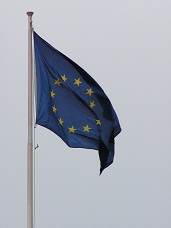 Territorial Expansion of the Community Trade Mark and Community Design Systems
Territorial Expansion of the Community Trade Mark and Community Design Systems
On 1 July 2013, Croatia will join the European Union with the result that, from that date, existing and new Community Trade Marks (CTMs), as well as unregistered and Registered Community Designs, will have their coverage expanded to that country.
This expansion of protection will occur automatically, without the need for owners of CTMs and Community Designs to take any action, nor pay any fees.
Technicalities for Community Trade Marks
- CTM applications that are filed between 1 January 2013 and 30 June 2013 may be challenged by owners of earlier Croatian national rights through the opposition or post-registration invalidity systems.
- CTMs filed prior to 1 January 2013 cannot be opposed or invalidated on the basis of earlier Croatian national rights.
- Owners of earlier Croatian national rights will retain the ability to prohibit the use in that country of conflicting trade marks which are protected by expanded CTMs, assuming that those Croatian rights were acquired in good faith and prior to 1 July 2013.
- Only CTMs that were filed on or after 1 July 2013 may be refused by OHIM, or challenged by third parties, on the basis of absolute grounds that apply only in Croatia (e.g. if trade mark is descriptive or deceptive of the specified goods/services in Croatian).
- Owners of corresponding Croatian and CTM trade marks may consider incorporating the protection afforded by the Croatian right into the CTM by claiming ‘seniority’. The protection afforded by the CTM will then reflect the historic protection afforded by the Croatian right, without the administrative and cost implications of maintaining the Croatian trade mark.
Technicalities for Community Designs
- The validity of Community Designs – both registered and unregistered – requires absolute novelty, that is to say that the design must differ in more than immaterial details from designs already made available to the public anywhere in the world (subject to a 12 month grace period in the case of Registered Community Designs). Further, the design must have an overall impression on the informed user which differs from the overall impression produced by any other design which has been made available to the public.
As such, Croatia’s joining of the European Union will not have an effect on whether a design is inherently capable of protection.
- However, owners of earlier rights in the European Union (such as trade marks, copyright works or registered designs which pre-date an application for Registered Community Design but are only made available to the public after the filing of that Registered Community Design) can apply to invalidate a conflicting Registered Community Design once protection is granted.
Accordingly, once Croatia joins the European Union, owners of earlier rights in that country will be able to apply to invalidate conflicting Registered Community Designs which are filed on or after 1 July 2013.
- Whilst owners of the aforementioned earlier rights in Croatia will not be able to use these rights to invalidate Registered Community Designs filed prior to 1 July 2013, they will retain the ability to prohibit the use in that country of conflicting designs which are protected by expanded Registered Community Designs filed prior to 1 July 2013, assuming that their Croatian rights were acquired in good faith.
They will also retain the ability to invalidate any Registered Community Design on the basis that the design is not inherently capable of protection e.g. due to a lack of novelty.
- From 1 July 2013, Unregistered Community Design protection can be obtained if the design was first made available to the public in Croatia.
Current members of the European Union
Austria, Belgium, Bulgaria, Cyprus, Czech Republic, Denmark, Estonia, Finland, France, Germany, Greece, Hungary, Ireland, Italy, Latvia, Lithuania, Luxembourg, Malta, Netherlands, Poland, Portugal, Romania, Slovakia, Slovenia, Spain, Sweden and the United Kingdom.
Further Enlargement
Croatia is unlikely to be the last country to join the European Union and, as such, the territorial coverage of CTMs and Community Designs is likely to continue to evolve. Currently, there are five candidate countries who have applied to join the European Union (Macedonia, Montenegro, Serbia, Turkey and Iceland), although there is no guarantee that they will secure membership.
Ben Britter, Keltie LLP 21 January 2013



It will also have an impact on the Unitary patent. After Grant from the EPO, one will only be able to chose the “unitary way” if all EU states particiapting were designated at the application moment. As Croatia became a EPC member Jan 1, 2008, it means that when Croatia becomes a EU member, no EP application with application date before Jan 1, 2008 can use the unitay way.
[…] by ste náhodou nevedeli, Európska únia privíta v tomto roku nového člena. Od 1. júla sa ním stane Chorvátsko. Malá kopa pýta viac a ktovie, možno Chorvátov jedného […]
[…] already noted in ipcopyben’s post here, Croatia is set to join the EU on 1 July […]
[…] are a late call up and may join the game at some point during 2013. [Croatia are due to join the EU in July 2013. As they are already part of the EPC they could apply to join the enhanced cooperation regime, […]
Olle, that’s very plausible, but I’m not convinced it has to work like that. Instead, the Unitary Patent may offer the opportunity for those who did not designate Croatia to obtain patent protection there belatedly. Presumably, with enhanced co-operation, Croatia has the option to join or not to join? One would speculate that they would join, like most countries, but they might decide, like Poland, to hang back and see what happens. If they don’t join the point falls away (for the present, at least).